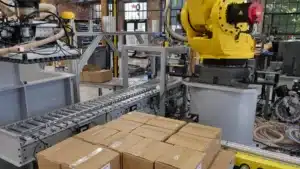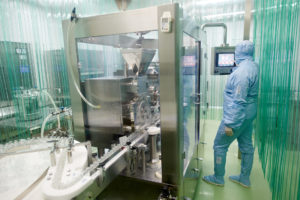Do You Need Pneumatic Lubricators?
Lubricators have been used in compressed air systems for many years. They are the “L” in FRL, or filter/regulator/lubricator. They are designed to introduce oil as a vapor into a compressed air system. However, if you observe new machines that use compressed air, you will notice that these devices are hardly ever used anymore. Why?
Early pneumatic products like valves and cylinders used natural rubber and other materials for seals. In fact, leather was often used for cylinder rod seals. Have you ever heard the term “packing”? These materials required oil lubrication in order to seal effectively and reduce friction. This is why lubricators exist – to provide a consistent supply of oil to seals on valves and cylinders.
Modern Pneumatic Seal Material
However, seal materials have come a long way. The most common material now used for seal material for pneumatic components is Nitrile, which is a synthetic rubber copolymer. Some seal manufacturers also add products like Teflon to their Nitrile blends to provide additional lubricity. This allows the seal to operate effectively without additional lubrication. Also, manufacturers of pneumatic products add special greases to the seals during assembly. These greases are designed to coat the surfaces that come in contact with the seals, and they are designed to resist drying out or degrading.
When Are Lubricators Necessary?
So why are pneumatic lubricators even offered anymore? There are still a few pneumatic products that require internal oil lubrication. Anyone who uses a pneumatic tool understands that light machine oil must be added periodically. Additionally, some air motors and air clutches also require internal oil lubrication. If you need to use these products, you will have to figure out a way to get them lubricated from time to time.
Only use a pneumatic lubricator if you intend to use a pneumatic product that requires internal lubrication. Then, try to use it so that you only lubricate the device that requires it. Why lubricate your entire system when only one device needs it? In fact, depending on where you locate the lubricator in the system, the oil may not ever make it to the device that needs it.
Remember – the oil is suspended as a vapor in the compressed air stream. If the air must take a circuitous route to reach the intended device, the oil may come out of suspension before it gets there.
There are other factors to consider as well.
- Who will be responsible for keeping the lubricator bowl full of oil?
- Will they be trained to adjust it to provide the right amount of oil?
- Will they be trained to only use the proper oil?
These are important considerations. Many machines have had performance issues directly related to poor lubricator maintenance and adjustment. If the lubricator runs out of oil, the oil inside the system will tend to dry out, causing many pneumatic products to stick or slow down. If improper oil is used, it can damage the entire pneumatic system. If too much oil is used, it tends to come out of the system exhaust where it can create puddles of slippery oil or oil vapor in the atmosphere.
When Are Lubricators Unnecessary?
Pneumatic lubricators used to serve an important purpose in a compressed air system. Advances in seal material have minimized their importance. If you are designing a new machine that will use compressed air, I recommend that you leave the lubricator out. If you need to use a device that requires internal lubrication, I recommend that you install the lubricator so that it only supplies oil to that device. If you still want to lubricate the entire system, I recommend that you install the lubricator in a location that is highly visible and easy to maintain. You should also consider providing documentation with your machine that clearly states the correct setting for the device, the maintenance schedule to check oil level, and a recommendation for the correct oil to be use.
Still not sure if you need a lubricator? Contact one of the pneumatic experts at Cross Company today!
How Cross Can Help
Don’t get left behind when it comes to industrial automation. As more and more manufacturers are making the switch to automation solutions, the best time to assess your operation and discuss options is today. Whether you need products for automated machinery, services to optimize your production, or complete automation solutions, Cross can help. We follow best practices as outlined by A3 and ISA as well as relevant ISO standards (such as 10218 and 13849). Contact one of our automation experts today to discuss your application.







